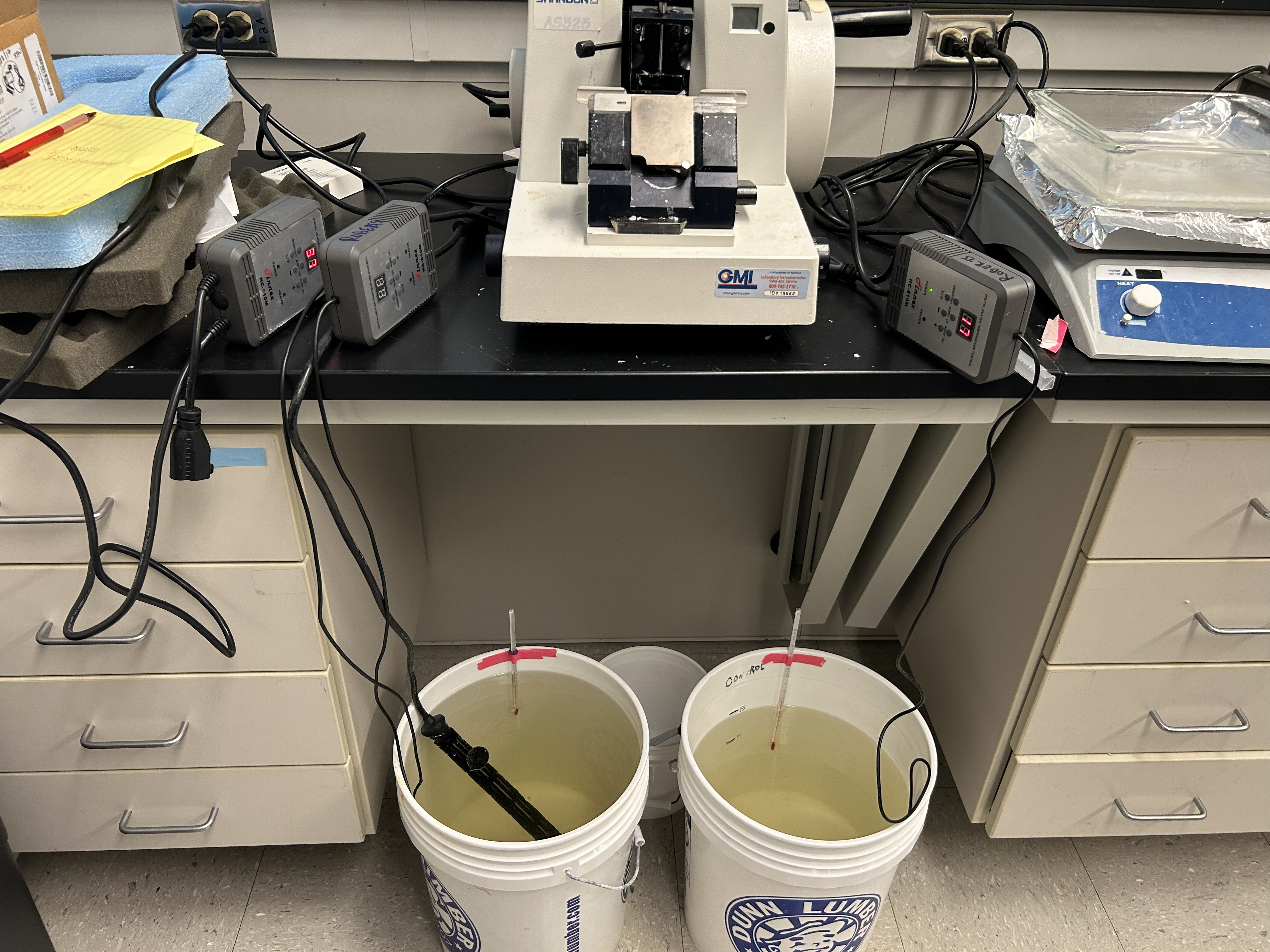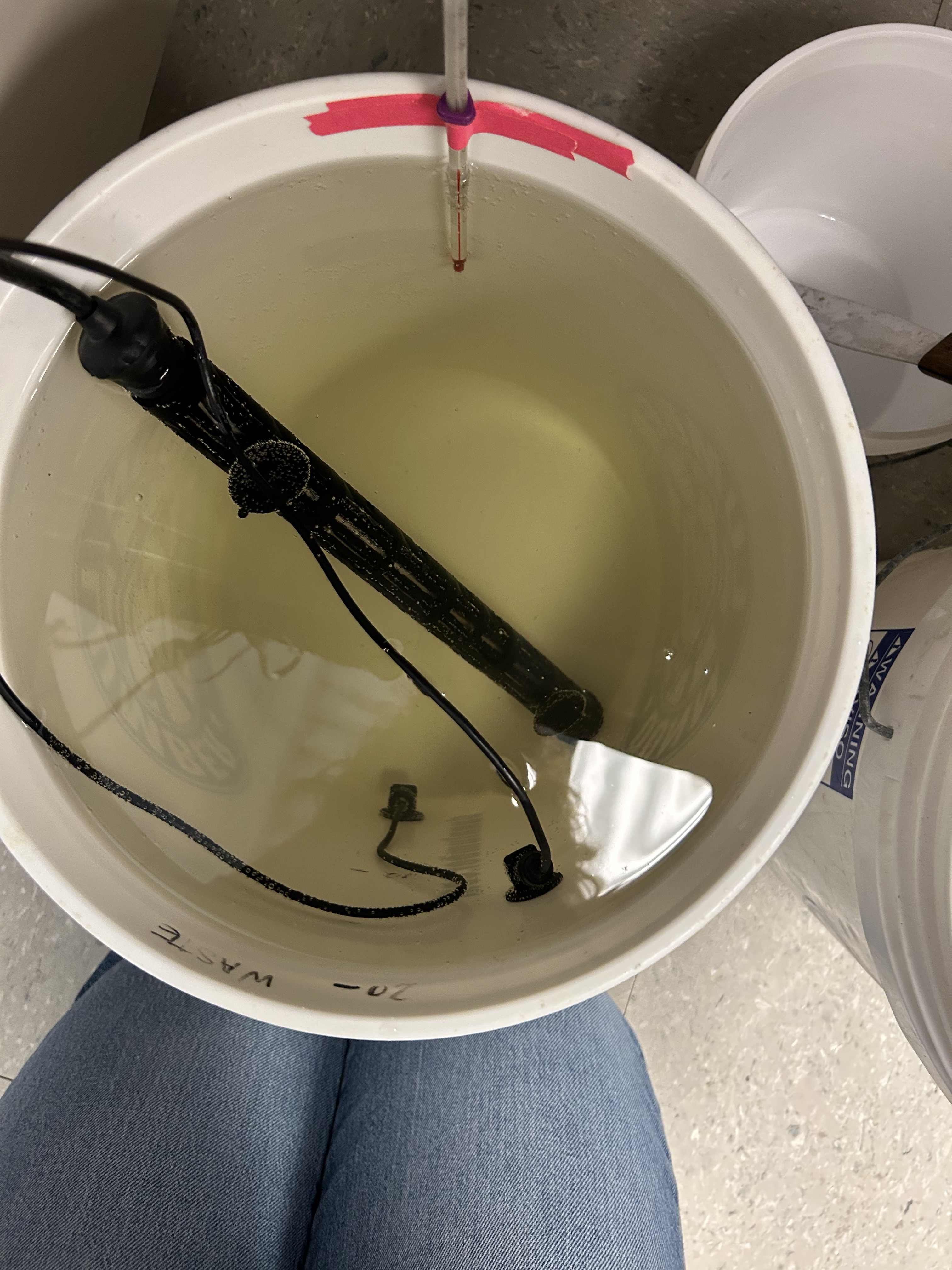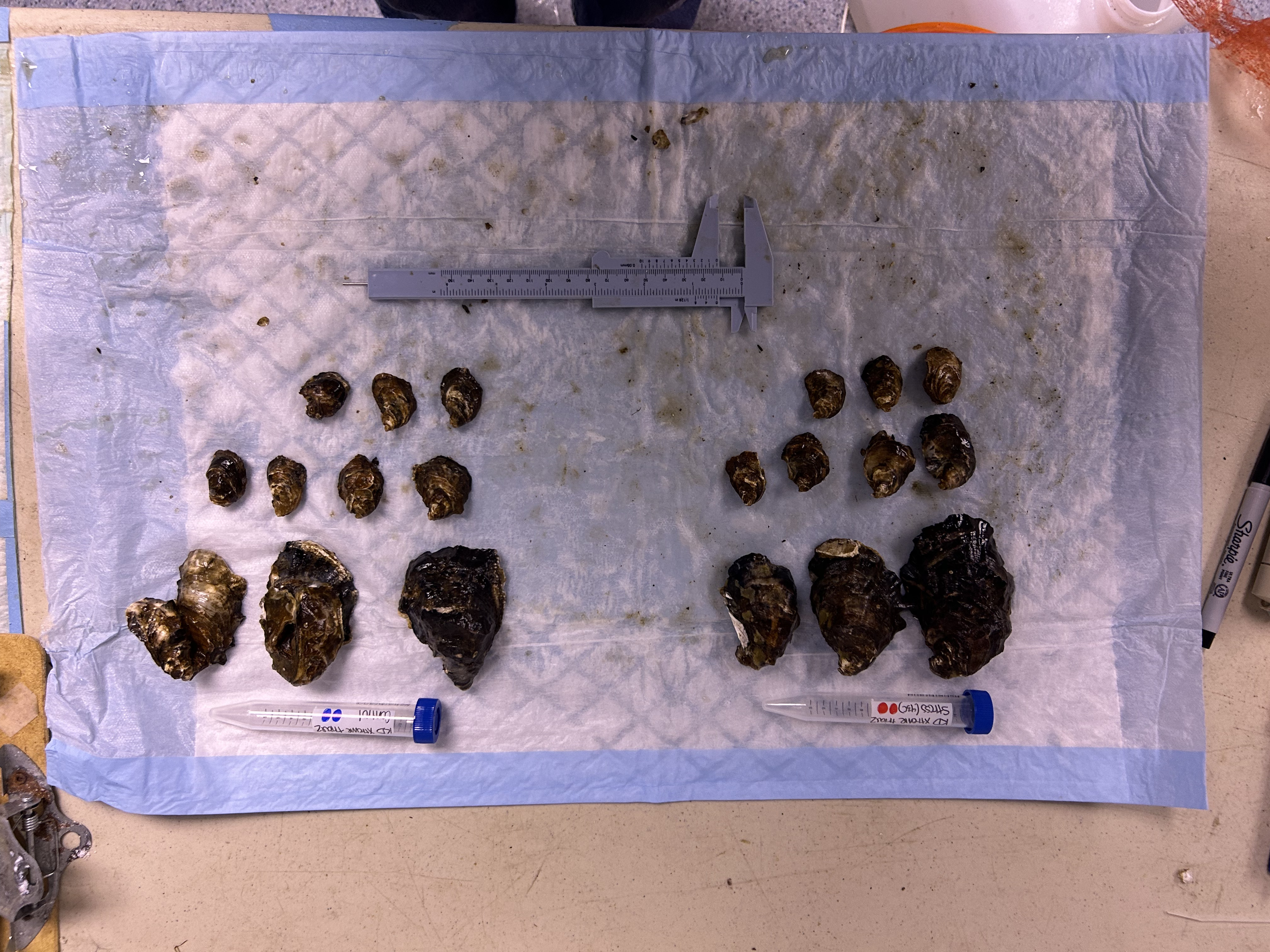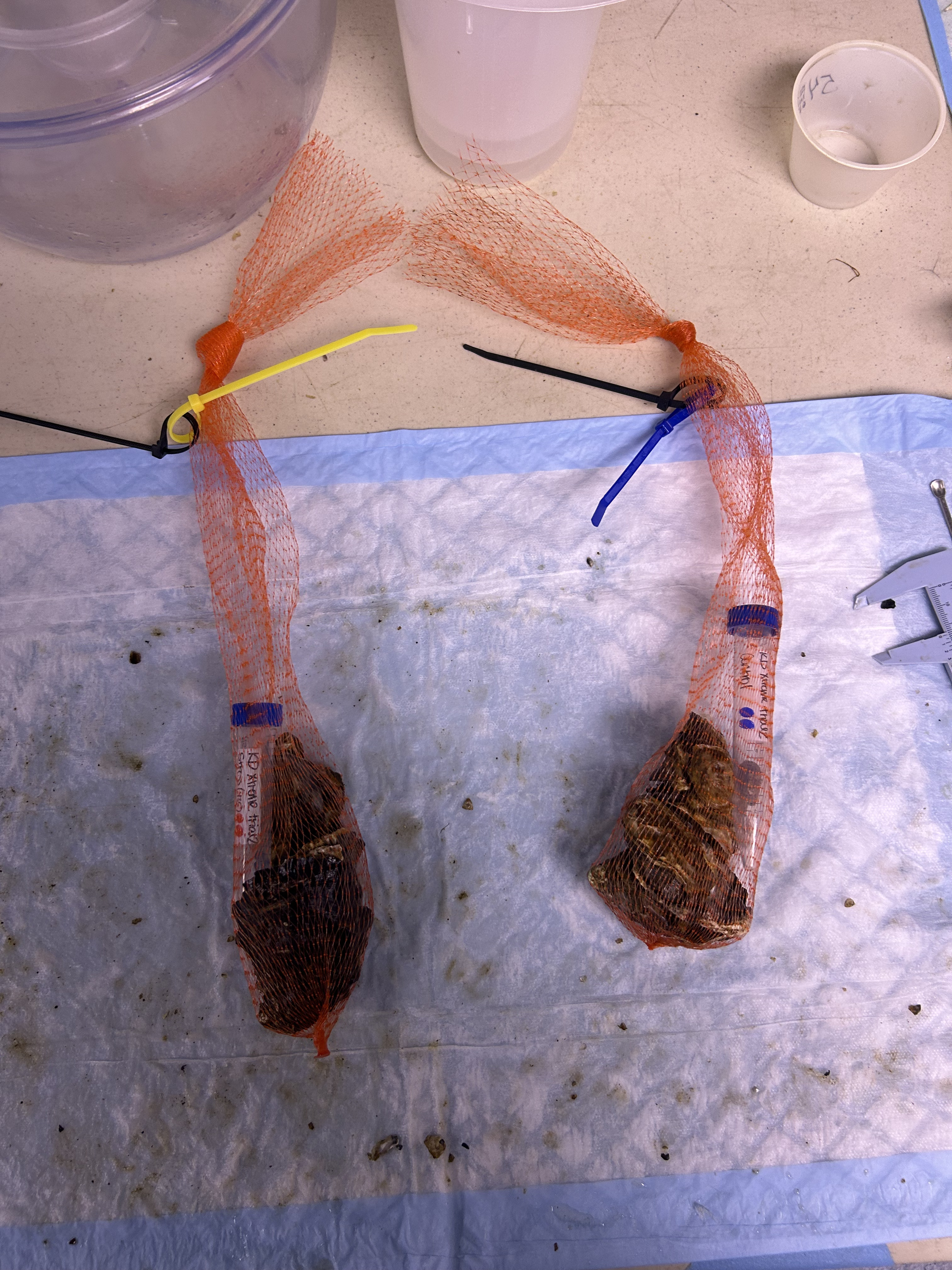Second trial of an extreme stress test on our extra Pacific oysters. The experimental setup of Trial 1 didn’t work well, and ended up stress the oysters at the sublethal35-38C, instead of a lethal temp of 43C.
This time I’ll be using full bucket of water with a heater + thermostat, instead of warming water in the incubator. This should heat the water faster and better regulate the temperature following addition of oysters.
Trial 2 protocol
Filled two clean white plastic buckets with roughly 20L of seawater from the cold seawater tank in FTR. Placed digital thermostats and thermometers in both. To one bucket (the “treatment” bucket), added a rod heater decoupled from the thermostat. Heated the treatment bucket to 43C by manually monitoring the temperature and turning off heater once at temperature.
Notes: I noticed while heating the treatment bucket that water at the top of the bucket warmed faster than water at the bottom. I added an additional thermostat so that one thermostat sensor was attached to the bottom of the bucket and one was attached the top of the bucket (see pictures). To ensure even heating, I manually mixed the water during heating until the two thermostats were within 1C of each other, repeating whenever the thermostats diverged by more than 1C. Whenever I mixed the treatment bucket, I would also mix the control bucket.


Isolated two groups of 10 oysters from bag “13” (untreated diploid), selecting similarly sized sets of oysters, and placed in small mesh bags. Randomly assigned one bag to treatment and one to control. Labelled each with a labelled 15mL tube placed inside bag and colored zip ties attached to the bag (didn’t have any waterproof bag tags). Yellow and black is 43C group, blue and black is control. Measured length of each oyster in each group using a manual caliper, then placed back in respective labelled bags and placed bags in cold seawater tank for roughly 1hr
Notes: Noticed a few dead oysters in the source bag “13”, all on the small side.



Once the treatment seawater bucket was at 43C, I began the stress trial. I placed the “treatment” bag of oysters in the 43C bucket, and the “control” bag of oysters in the bucket of ambient water (roughly 17C). The oysters remained in their respective buckets for 1 hr (16:30 - 17:30, 7/15/2024).
I maintained the treatment water temperature of 43C by manually monitoring the thermostats and thermometer. When any of these temperature gauges dropped below 42C (a 1C variation) I turned the heater back on until all three temperature gauges were again at 43C. I also mixed the water the entire time the heater was on, to ensure even heating, and ensured the bag of oysters was not touching the heating element itself. I had to turn the heater on roughly every 15 minutes to maintain temperature.
Notes: The thermostat whose sensor was at the top of the treatment bucket consistently displayed a temperature 1C below the thermostat placed at the bottom of the bucket. I’m not sure if this is because the top layer of water lost heat faster or because of a calibration difference in the thermostats. This means, however, that a drop below 42C in the top thermostat generally meant a drop to 42C in the bottom of the bucket, which means water at the bottom of the bucket likely never dropped below 42C.
After the 1hr treatment, placed both bags of oysters back in the cold seawater tank in FTR.
Unplugged all heaters and thermostats, emptied both buckets of seawater into the drains in the seawater room, and rinsed both with DI water.
Monitor oysters in both groups for mortality once per day at roughly noon for the next 2 weeks. To check mortality, remove bag of oysters from tank, empty bag onto table. An empty shell or gaping with no response to stimulation (prodding with metal tool) indicates mortality.
Mortality
Checked bags daily at roughly noon for mortality. Mortality evaluated by prodding oysters and squeezing lightly at base of hinge. Empty shells or oysters that gaped and remained open during stimulation were considered dead.
| Date | Time | Control (mm length of dead oyster(s)) | Extreme stress (mm length of dead oyster(s)) |
|---|---|---|---|
| 7/16 | 12:30 | - | 25, 27 |
| 7/17 | |||
| 7/18 | |||
| 7/19 | |||
| 7/20 |